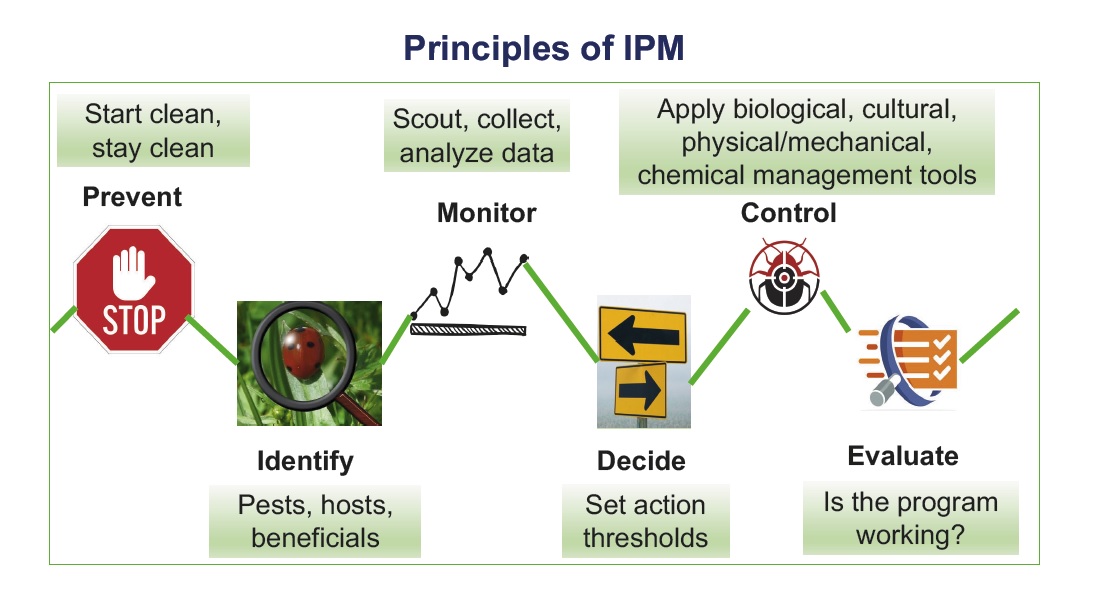The Definitive Guide for Pestwise
Table of ContentsThe Single Strategy To Use For PestwiseGetting The Pestwise To Work3 Simple Techniques For Pestwise9 Easy Facts About Pestwise ExplainedAll about PestwiseSome Known Incorrect Statements About Pestwise Some Known Incorrect Statements About Pestwise

Q. Define "incorporated bug monitoring" (IPM) and listing a number of possible control methods that may be utilized in an IPM strategy. A. Integrated parasite management is the incorporating of proper pest control techniques into a single plan to reduce pests and their damage to an acceptable degree. Parasite control techniques may consist of: host resistance, biological control, cultural control, mechanical control, sanitation, and chemical (chemical) control.
3 Simple Techniques For Pestwise
What can you do to maintain the pests you are trying to control from ending up being resistant to the chemicals you utilize? A. Pest resistance can be decreased by utilizing integrated pest management and revolving the kinds of pesticides made use of.
Bugs are a vital threat to the farming business, and incorporated pest administration assists farmers address and minimize these threats. Integrated insect management utilizes numerous methods in facility, hence being an extra reliable remedy to the problem. Mosquito Control. Specifically, removing aggressive chemical techniques permits reducing injury to individuals and the atmosphere by utilizing natural and much safer alternatives rather
The Facts About Pestwise Uncovered
The goal of integrated pest monitoring is to reduce this injury and control acceptable infestation degrees instead of eliminate all unwanted populations. This is why it is essential to recognize what actions are warranted in each case and use aggressive ones only when various other incorporated monitoring strategies don't work. Integrated monitoring minimizes the adverse consequences of a non-IPM strategy, and the main benefits of IPM Perks of IPM.
A right understanding of the problem extent determines if the problem must be dealt with. are the following components of an IPM program because it is necessary to realize if the organisms make potential risks and pick the incorporated management options or the specific chemical usage. intend to minimize invasions by using different agronomic techniques.
Indicators on Pestwise You Need To Know
Integrated administration alternatives in an IPM program begin with much safer to a lot more aggressive ones. The above-mentioned incorporated administration facets help understand exactly how to plan and apply an IPM program step by action: Screen your plants regularly.

Amongst others, IPM cultural approaches include the complying with field management techniques: dirt treatment; option of suitable plants; plant rotation; interplanting or strip chopping; option of planting days; weed control; use of trap plants. Positive dirt conditions speed up plant development, and energetic crops are more resistant to infestations. Healthy seedlings and seeds determine successful plant growth, so it is vital to choose pest-free planting material with strong roots.
, which is likewise used in the integrated pest monitoring system. Conversely, problems boost when plants of the exact same crop type or family members expand together.
Potato beetles can hurt expanding potatoes, as well as tomatoes. Growing catch plants in spots is an additional alternative for IPM intercropping. This integrated pest monitoring Learn More Here approach suggests attracting parasites to specific plants and then controlling them with chemical or mechanical techniques. In certain, you can expand soybeans as catch plants for Japanese beetles.
Unknown Facts About Pestwise
Obstacles are regular instances of physical IPM approaches. Fully grown bugs or their eggs and larvae are collected by hand and damaged.

Department of Plant Sciences. This incorporated management method indicates a typical method of damaging pests by killers, parasitoids, pathogens, and various other biological control representatives (also known as hostile microorganisms). The function of biological control in IPM is to.
The Pestwise PDFs
With time, their populace turned out to be an actual problem to farmers together with native kangaroos or dingoes. The walking cane toad is another instance highlighting incorporated biological control failing hereof when it declined to hunt the target types and ended up being a parasite itself. Parasitoids develop on or within their hosts to ultimately kill them after growing.